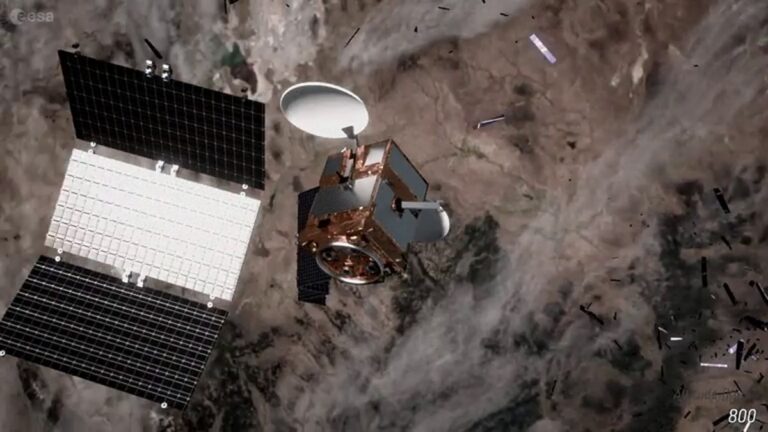
[ad_1]
The space around our planet is getting cluttered. Thousands of satellites and millions of out-of-control fragments of space debris hurtle high above our heads, threatening to collide. Here are the objects that experts fear the most.
In just the past month, the goings-on in near-Earth space have twice made headlines and prompted experts to call for action. On Jan. 27, space debris researchers looked on in horror as two huge pieces of space junk — a decades-old upper stage of a Russian rocket and a long-defunct Russian satellite — came within 20 feet (6 meters) or so of each other. The incident, described as a close call “worst case scenario,” could have spawned thousands of dangerous debris fragments that would have stayed in orbit for centuries. Then, a report released on Feb. 6 revealed that in early January a mysterious Russian satellite broke apart into 85 fragments large enough to be tracked from Earth.
Both of these incidents happened in areas that experts refer to as bad neighborhoods (opens in new tab), regions of low Earth orbit too high above the planet to benefit much from the cleaning effects of its atmosphere. Both of these incidents involved objects that are at the top of space debris experts’ list of hazards. Here we review what type of stuff the experts fear the most.
Related: How fallen space junk could aid the fight against orbital debris
1. Russian SL-16 rocket bodies, aka Zenit upper stages
Surprisingly, it’s not the hundreds or even thousands of new spacecraft put up by megaconstellation operators such as OneWeb or SpaceX that have the highest chance of bringing on orbital doom. It’s the old stuff — spent rocket stages and large, chunky satellites — launched during the Cold War era and into the early 2000s.
“Constellations may have hundreds to thousands of satellites, but they are quite good at orchestrating themselves,” Darren McKnight, a senior technical fellow at private debris monitoring firm LeoLabs, told Space.com in an interview. “They have a propulsion system that makes them very agile, and they can make collision-avoidance maneuvers. The derelict objects, on the contrary, have no ability to maneuver away from each other.”
Among these old derelict objects, the SL-16, a giant 9.9-ton (9 metric tons), 36-foot-long (11 meters) upper stage of Russia’s Zenit rocket, is the source of the greatest apprehension.
LeoLabs currently monitors 18 of these rocket stages that circle Earth in one of the “bad neighborhoods” at the altitude of around 520 miles (840 kilometers). From this altitude, it will take centuries for the debris to come down. In the meantime, the rockets continue crossing paths with thousands of other defunct spacecraft and millions of debris fragments.
“They’re like a big yellow school bus without a driver, without brakes,” McKnight said. “And there is a cumulative risk. It would not be unexpected to have one of these rocket stages be involved in a collision very soon.”
The sheer size of these rockets means that a collision would produce an enormous amount of space debris fragments that would turn the bad neighborhood into an even worse one, possibly triggering the Kessler syndrome, a dreaded scenario of unstoppable cascades of collisions such as the one depicted in the 2013 Oscar-winning movie “Gravity.”
“If you worry about scenarios such as the Kessler syndrome, the probabilities are dominated by two big things hitting each other, because that would generate by far the most debris that then can trigger a chain reaction,” Jonathan McDowell, an astronomer and astrophysicist at the Harvard–Smithsonian Center for Astrophysics and a leading space debris expert, told Space.com.
McDowell added that the rocket stage problem, while not unique to Russian technology, has to do with the launcher design that Russia’s predecessor, the Soviet Union, frequently went for. Most rockets used by Europe, the U.S. and even China rely on massive first stages that fall back to Earth shortly after launch and use a comparatively small upper stage to deposit their payload in orbit.
“The U.S., for example, would typically use the Centaur upper stage, which uses liquid hydrogen,” McDowell said. “This fuel provides higher miles per gallon. And so a smaller rocket can do the same job. The Russians were using kerosene or hydrazine, which are lower energy chemical propellants that needed a bigger rocket for the same job.”
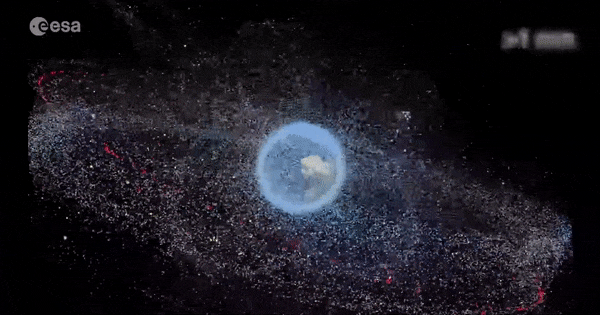

Darren McKnight is a Senior Technical Fellow at LeoLabs, a private California-based firm mapping orbital traffic. McKnight is a member of the International Academy of Astronautics’ Space Debris Committee, where he contributes to the development of position papers on the topic of space debris mitigation. He is interested in developing technical solutions for managing the space debris problem and encouraging sustainable practices in space utilization.
McKnight holds a Bachelor’s Degree in Engineering Sciences from the United States Air Force Academy, a Master’s in Mechanical Engineering from the University of New Mexico and a Doctorate in Aerospace Engineering from the University of Colorado.
2. Russia’s SL-8 rocket stages and cold-war spy satellites
The near miss of Jan. 27 involved another type of Russian rocket upper stage — the 1.54-ton (1.4 metric tons) SL-8. This rocket stage, used by Russia in its smaller rocket family called Kosmos, delivered between the 1960s and 1990s about 145 spy and communication satellites to the altitude of 605 miles (975 km), according to McKnight. The satellites, each with a mass of 1,760 pounds (800 kilograms) and no longer in use, are still polluting this part of near-Earth space, and so are the rockets that launched them.
“These objects have been lingering there for decades,” said McKnight. “If they were all launched in 1990, the probability of one of them to experience a collision in 2023 would be around 20%. We have nearly experienced it [on Jan. 27]. And in situations like these, you can only cross your fingers and hope.”
The satellite involved in the recent near-miss was also a property of Russia — a 1,760-pound (800 kilograms) Cosmos 2361 espionage satellite launched in 1998 on a Zenit rocket.
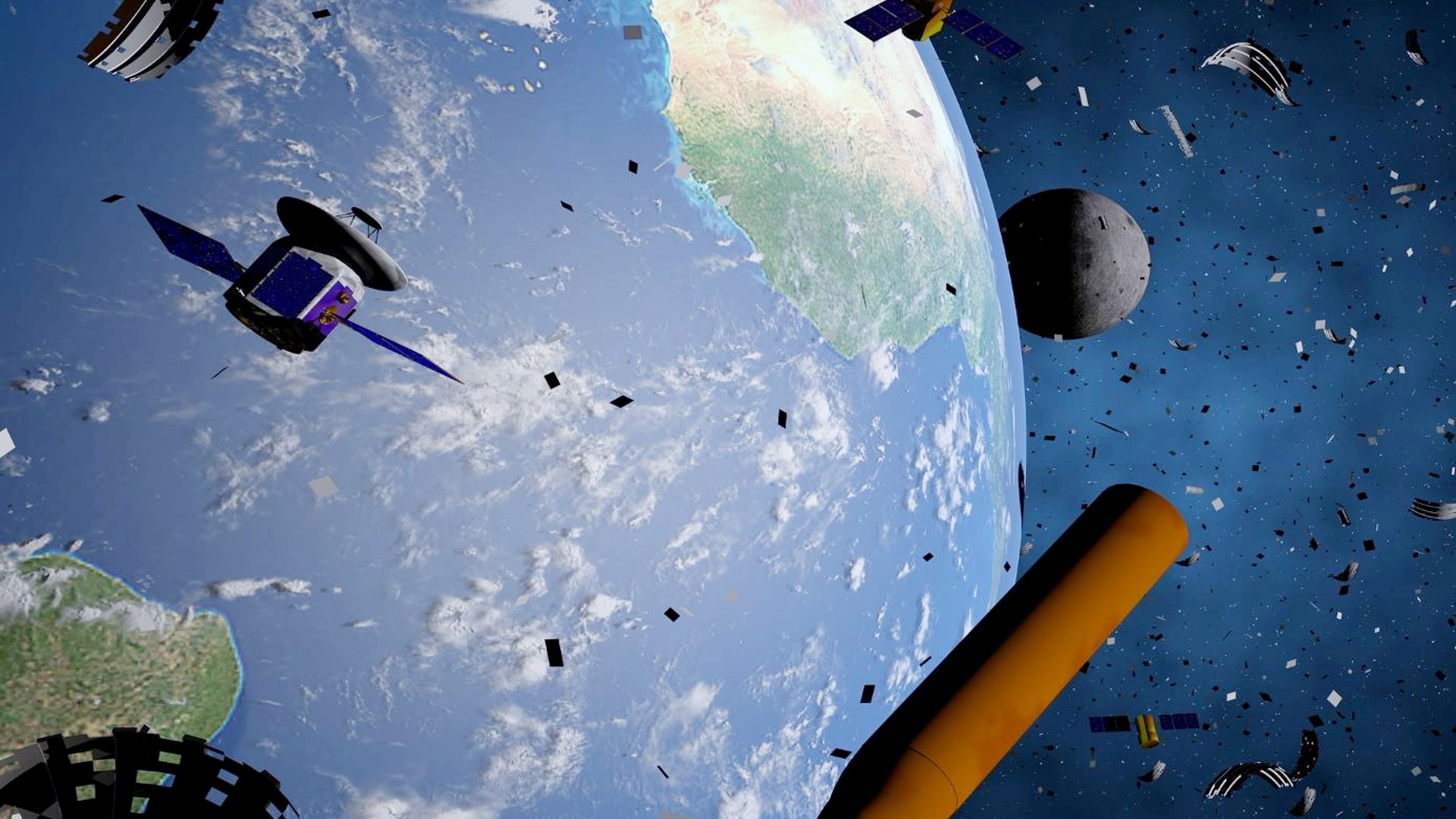

Jonathan McDowell is an astronomer and astrophysicist at the Harvard–Smithsonian Center for Astrophysics. His main research focus is on black holes, quasars and sources of high-energy X-ray radiation in distant galaxies. He is a member of the team behind NASA’s X-ray observatory Chandra, but has also gained prominence as a leading space debris expert. McDowell is the author and editor of Jonathan’s Space Report, an e-mail-distributed newsletter documenting satellite launches.
McDowell has a Bachelor’s Degree in Mathematics from Cambridge University in the U.K. and a PhD in Astrophysics also from Cambridge.
3. Chinese anti-satellite missile test fragments
In 2007, the bad neighborhood where the larger SL-16 rocket stages reside became the location of one of the worst debris-creating events in history — a Chinese anti-satellite missile test that targeted one of the nation’s own defunct weather satellites. The anti-satellite missile hit the 1,650-pound (750 kg) Fēngyún spacecraft, orbiting at the altitude of 537 miles (865 km), at the speed of 18,000 mph (29,000 kph), shattering it into thousands of fragments. The fragments, like balls on a billiard table, scattered in all directions upon impact, polluting near-Earth space hundreds of miles away from Fēngyún’s original orbit.
Some of these fragments, McKnight said, were detected as high as 1,060 miles (1,700 km) and as low as 217 miles (350 km) above Earth’s surface. Suffice to say that the bulk of this debris travels in the same bad neighborhood as the 9.9-ton SL-16 rocket stages, which have no way of avoiding it.
Out of the 3,500 pieces of Fēngyún debris that were large enough to be tracked by Earth-based radars shortly after the incident, 2,800 still hurtle completely out of control around the planet, threatening everything in their path.
“Debris from this single event was probably responsible for about 15% of the conjunctions [close approaches to other objects] that occurred last year,” McKnight said. “Every 15 minutes, we issue conjunction messages involving fragments from this collision.”
Overall, McKnight added, LeoLabs issued 400,000 conjunction alerts in 2022, warning spacecraft operators when other space objects were on a trajectory to pass too close to their spacecraft.
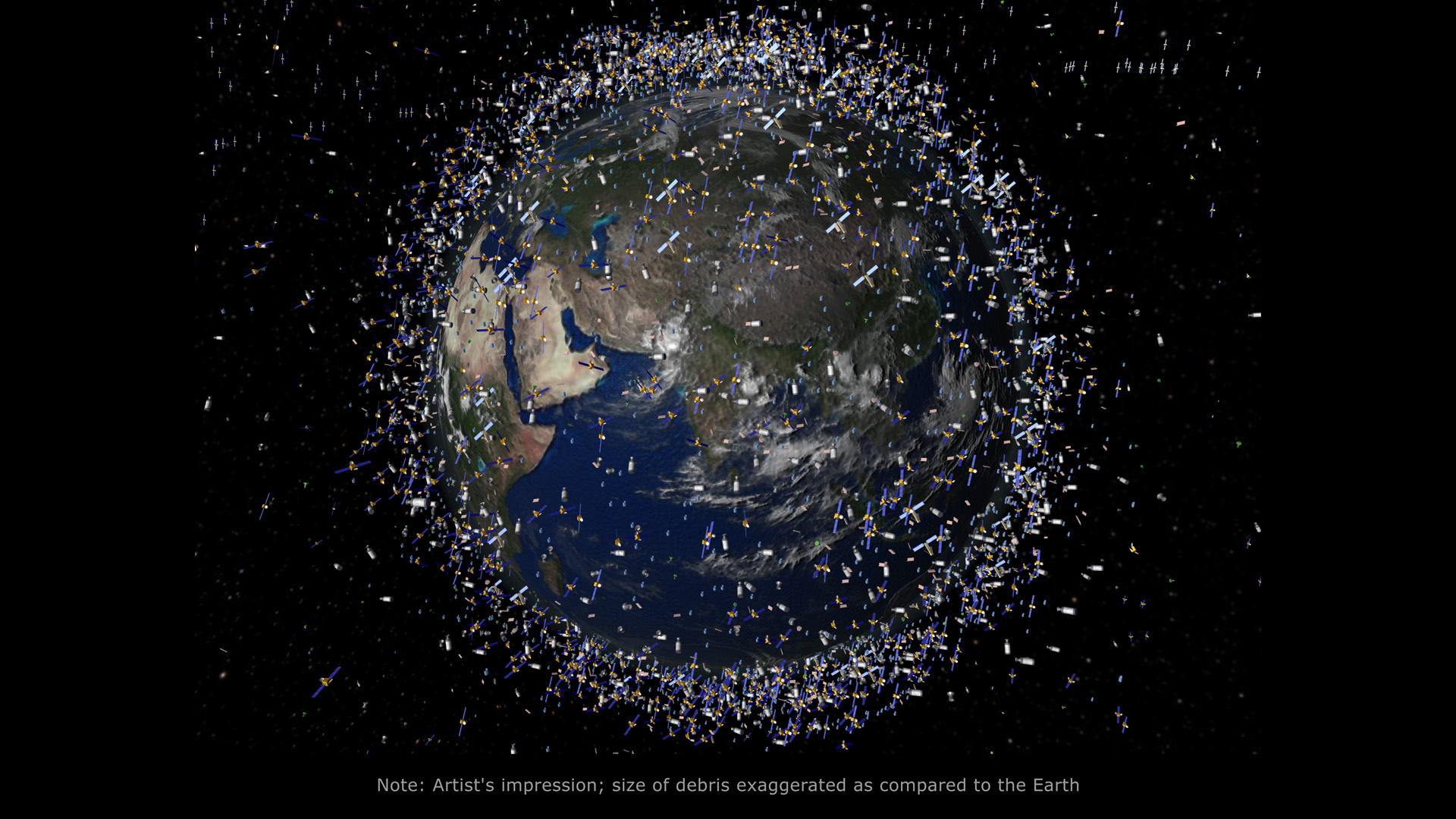
4. Earth-observing satellites Envisat and Landsat
The defunct European Earth-observing satellite Envisat circles the planet at the altitude of 480 miles (800 km), which is below the two main bad neighborhoods. Due to its sheer size, however, the satellite occupies a prominent spot on the list of worrisome objects.
At about 8.8 tons (8 metric tons), Envisat, which died a premature death in 2012, is one of the largest pieces of space junk in orbit, and a large stain on the reputation of the European Space Agency (ESA), which prides itself for its leadership in space sustainability.
NASA, too, has its share of defunct Earth-observing debris. Since the 1970s, the American space agency has launched nine generations of its Landsat satellites, only two of which are still operational. Weighing between one and three tons, the Landsat satellites orbit the Earth at altitudes between 430 and 560 miles (700 and 900 km). None of the already out of service satellites were successfully deorbited at the end of their lifetimes.
The U.S. National Atmospheric and Oceanic Administration (NOAA) has also left quite a bit of space clutter behind. Since the 1960s, NOAA has flown two dozen of polar-orbiting weather satellites that circle Earth at altitudes between 430 and 560 miles (700 and 900 km). 17 of these satellites, weighing between one and three tons each, are now dead but continue on their paths crossing the high-risk neighborhoods.
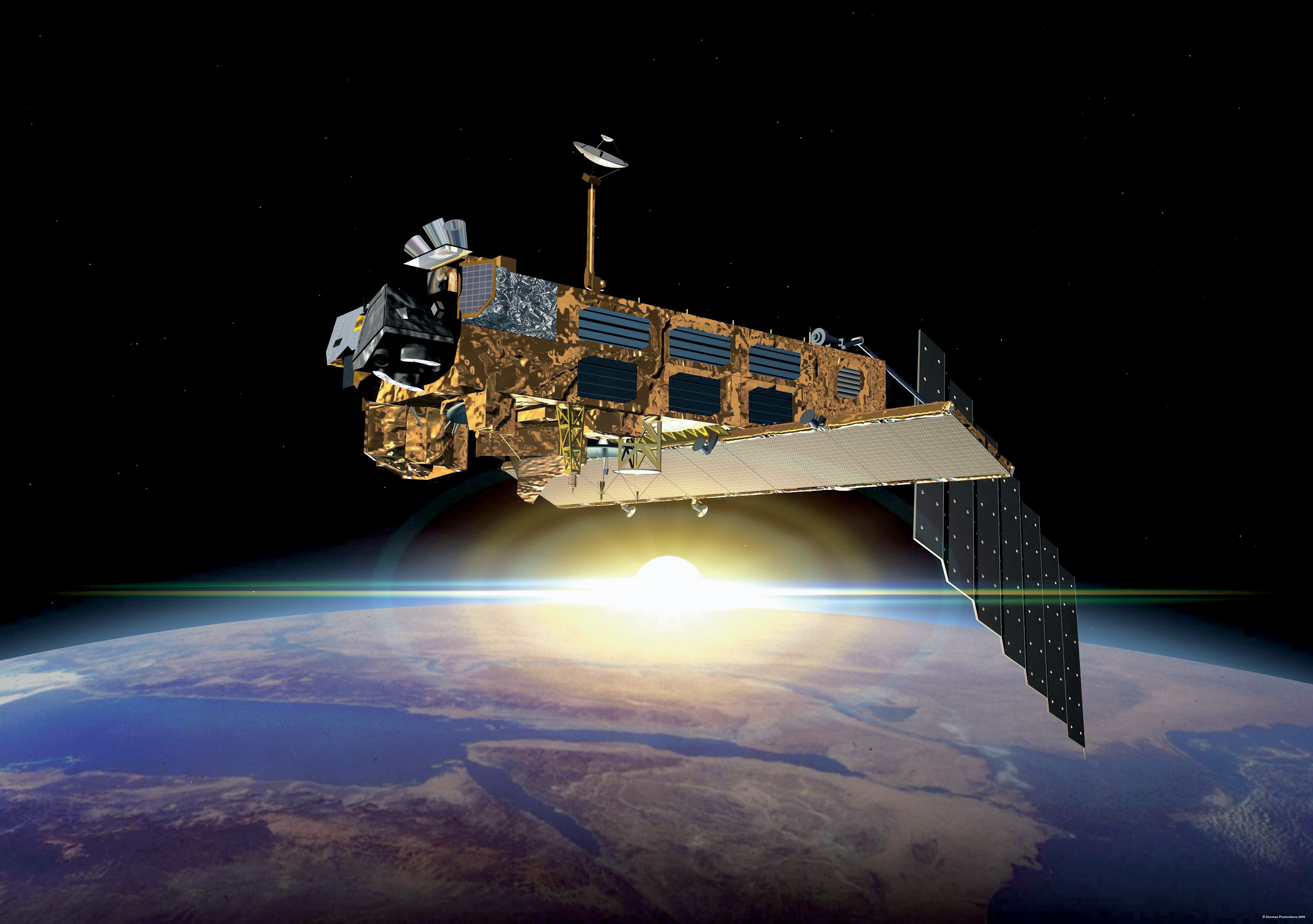
5. The Hubble Space Telescope
The iconic Hubble Space Telescope may still have a decade or more of life in it but it has the potential to turn into a troubling piece of debris once its mission is over.
At 12.4 tons (12.2 metric tons), the veteran universe observer is heavier than both Envisat and the dreaded SL-16 rocket stages. Hubble orbits relatively low, about 332 miles (535 km) above Earth’s surface, and so would likely take only a few years to spiral back to Earth. Due to its size, however, the telescope would unlikely burn up completely in Earth’s atmosphere during the re-entry. Sizeable chunks of the telescope’s scorched body would likely land on the planet’s surface, enticing souvenir collectors but also quite possibly causing damage to aircraft in the air or humans and infrastructure on the ground. Hubble’s operators will therefore have to make sure the telescope has enough fuel left to lower its altitude in a controlled fashion at the end of its mission and guide it to a safe splashdown in the ocean.
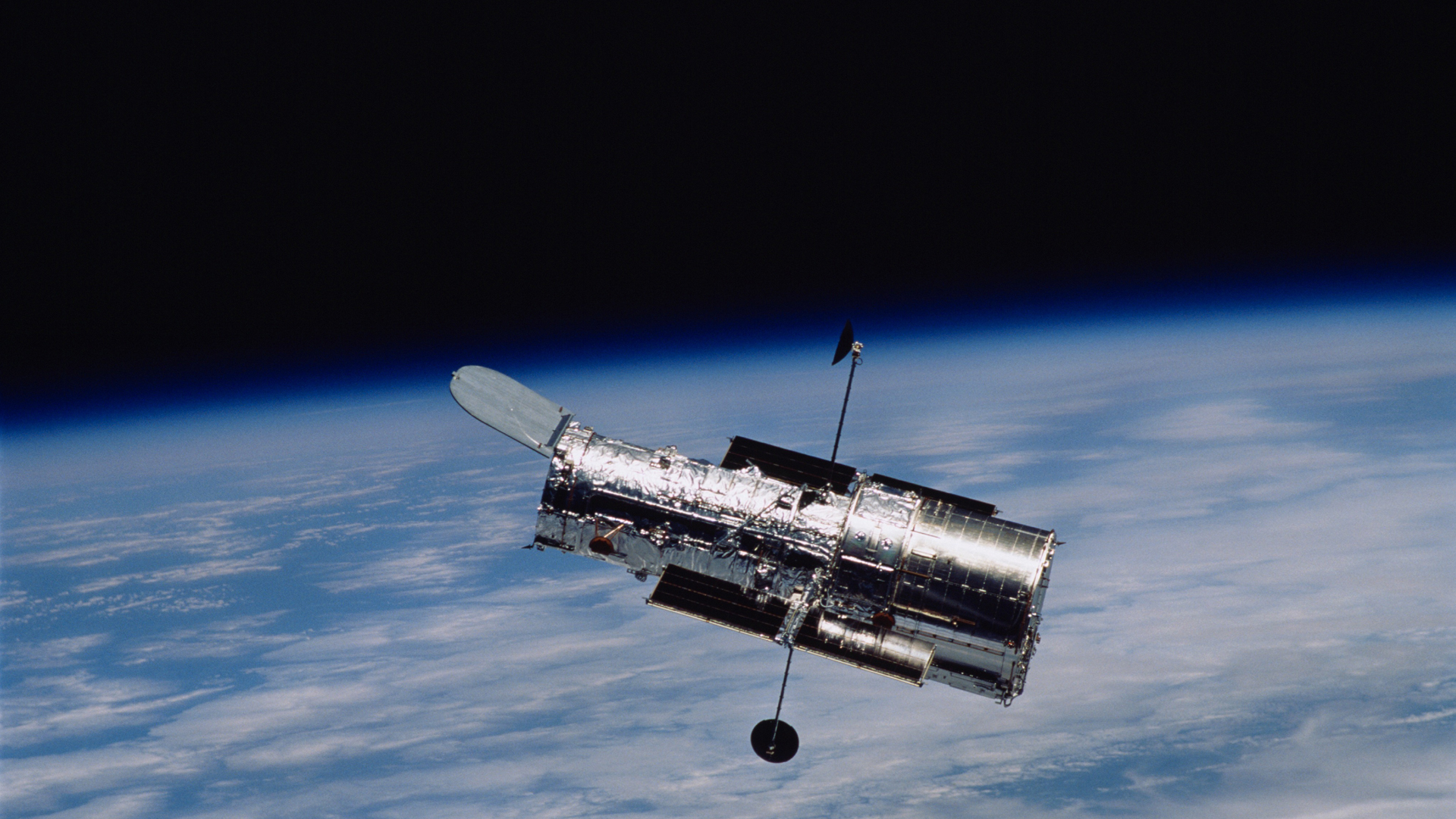
6. Too many constellation satellites
Experts somewhat differ in their views on the risks posed by satellite megaconstellations such as SpaceX’s Starlink and the network operated by OneWeb. These constellations drive the massive increase in the numbers of orbiting satellites that we have witnessed in the past decade and will continue to see in the coming years.
According to LeoLabs (opens in new tab), in the first 50 years after the launch of the world’s first satellite, the Soviet Union’s Sputnik 1 in 1957, 10,000 objects, dead and alive, had accumulated in low Earth orbit. Then the new space revolution arrived, and, within merely 14 years, the number doubled. As of late 2022, there were more than 21,000 objects in this heavily used region of space, LeoLabs reported.
Hugh Lewis, a British space debris expert and professor of astronautics at the University of Southampton in England, told Space.com that SpaceX — the world’s largest satellite operator, with over 3,500 active spacecraft in orbit as of February 2023 — deserves praise for its attitude to managing collision risk. The company’s autonomous collision avoidance system enables satellites to make a maneuver every time it registers a passing object with a 1 in 100,000 collision probability. In comparison, NASA only dodges stuff that has a collision likelihood of 1 in 10,000.

Hugh Lewis is a Professor of Astronautics at the University of Southampton in the U.K. and a co-director of the Centre of Excellence in In-situ and Remote Intelligent Sensing. He has worked in the fields of space debris and space sustainability for more than 20 years and is the author of the DAMAGE space debris model. Hugh represents the U.K. Space Agency at meetings of the Inter-Agency Space Debris Coordination Committee (IADC) where he chairs Working Group 2 (which is focused on space debris modeling).
Hugh has also represented the U.K. Space Agency at Scientific and Technical Sub-Committee meetings of the United Nations Committee on the Peaceful Uses of Outer Space (COPUOS) as an expert on space debris, space operations and space situational awareness.
Still, Lewis said, with SpaceX’s aim to deploy up to 42,000 Starlink satellites, over 10 times more than it currently has in orbit, and with other operators lining up to enter the market, even that low probability has a statistically high probability of producing a collision over time.
“The residual risk is potentially an issue, as the number of close approaches continues to rise,” Lewis said. “As the number of maneuvers they make continues to increase, maybe in spite of all these efforts, they will still get involved in a collision. With a higher number of low probability events, there is a higher probability collectively that a collision will occur.”
McDowell said that, while SpaceX alone may be able to manage its Starlink constellation with a high level of reliability, once multiple such constellations share the same orbital region, the situation will be akin to managing traffic in a major city.
“Five or 10 years from now, we may have anywhere between 20,000 and 100,000 satellites in orbit,” McDowell said. “And I am very skeptical that such a number can be operated safely. It only takes one company to enter a wrong number into their database and have bad data, and suddenly, all of your safety calculations are no longer valid and you end up with a collision.”
Whatever happens, we are surely going to hear more about space debris and satellite collisions in the coming years.
Follow Tereza Pultarova on Twitter @TerezaPultarova. Follow us on Twitter @Spacedotcom and on Facebook.
[ad_2]